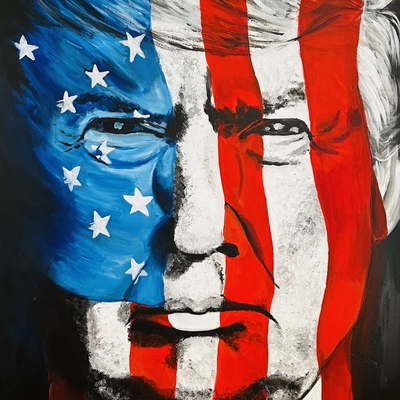Stay informed on the latest Truth Social posts from Donald Trump (@realDonaldTrump) without the doomscrolling. Consider it a public service for your mental health. (Why?)
- North Carolina's furniture business has been completely lost to China and other countries.
- Substantial tariffs will be imposed on any country that does not make its furniture in the United States.
- The imposition of these tariffs is intended to make North Carolina great again.
The stated intent to impose substantial tariffs on imported furniture directly impacts global supply chains, manufacturing costs, and consumer prices. Such tariffs could negatively affect companies with significant import exposure or those reliant on international trade for their furniture business, potentially influencing corporate earnings and market sentiment regarding trade policy. This could specifically affect retail, consumer discretionary, and manufacturing sectors within the S&P 500.
The stated intention to impose substantial tariffs on countries is an economic measure that could lead to trade disputes or retaliatory tariffs, potentially straining international economic relations. It does not contain direct threats of military action or calls for conflict escalation.
- Commodities: Tariffs could impact demand for raw materials (e.g., wood, metals) used in furniture production globally. Heightened trade tensions associated with tariffs might lead to a stronger US Dollar (DXY) as a safe-haven, potentially putting downward pressure on commodity prices, though specific inputs for US-made furniture might see localized demand shifts. Short-Term Watchlist: XAU/USD price action (potential safe-haven flows), global trade news. Medium-Term Focus: Inflation trends, USD trajectory related to trade policy.
- Currencies (Forex): The US Dollar (DXY) could strengthen due to protectionist rhetoric and potential repatriation of manufacturing, or weaken if tariffs lead to global economic slowdowns. Currencies of countries targeted by such tariffs (e.g., CNH) could weaken. Short-Term Watchlist: Fed speakers (on trade implications), Treasury yields, DXY movements. Medium-Term Focus: Central bank responses to trade-induced inflation/growth shifts, global trade balances.
- Global Equities: US-based furniture manufacturers and related industries might see a positive impact, while importers and retailers relying on foreign-made furniture could face higher costs and reduced profits. Non-US equities, particularly in countries affected by tariffs (e.g., China), could see negative impacts on their export-oriented sectors. Broad market sentiment could turn cautious if trade tensions escalate. Short-Term Watchlist: Futures open, sector-specific ETFs (retail, manufacturing), VIX. Medium-Term Focus: Earnings revisions for trade-sensitive companies, global capital flows.
- Fixed Income (Bonds): US Treasury yields could fall if global trade tensions lead to a flight to safety, or rise if tariffs are perceived as inflationary, requiring tighter monetary policy. Yield curve steepening or inversion could reflect changing growth and inflation expectations. Short-Term Watchlist: UST 10Y yield levels, credit spreads. Medium-Term Focus: Inflation expectations, Fed policy stance, fiscal concerns.
- Volatility / Derivatives: Policy uncertainty surrounding tariffs typically leads to an increase in market volatility. The VIX index could rise as investors price in higher risk. Options positioning may reflect increased hedging activity. Short-Term Watchlist: VIX levels, 0DTE flow. Medium-Term Focus: Volatility regime shifts influenced by ongoing trade policy.
- Crypto / Digital Assets: Bitcoin (BTC) might react to broader shifts in global risk sentiment. If tariffs lead to increased economic uncertainty or inflation concerns, BTC could behave as a risk-off asset or an inflation hedge, similar to gold, or it could be seen as a risk-on asset tied to tech equities, potentially falling during broader market downturns. Short-Term Watchlist: BTC/USD price action, correlation to tech stocks. Medium-Term Focus: Macro liquidity backdrop, regulatory responses to global economic shifts.
- Cross-Asset Correlations and Systemic Risk: Elevated trade tensions could lead to breakdowns in historical asset correlations, such as simultaneous declines in equities and bonds if both growth and inflation concerns rise. Liquidity concerns might emerge in specific sectors. Short-Term Watchlist: MOVE index, credit default swap spreads. Medium-Term Focus: Central bank interventions to manage market stress.
- Retail Sentiment / Market Psychology: The explicit policy statement could influence retail investor sentiment regarding specific domestic industries or sectors perceived to benefit from protectionism. It could also heighten general awareness of trade policy's impact on everyday goods. Short-Term Watchlist: Social media trends related to tariffs/trade, mentions of specific furniture companies. Medium-Term Focus: Retail response to potential price changes in consumer goods, broad shifts in investment themes.

